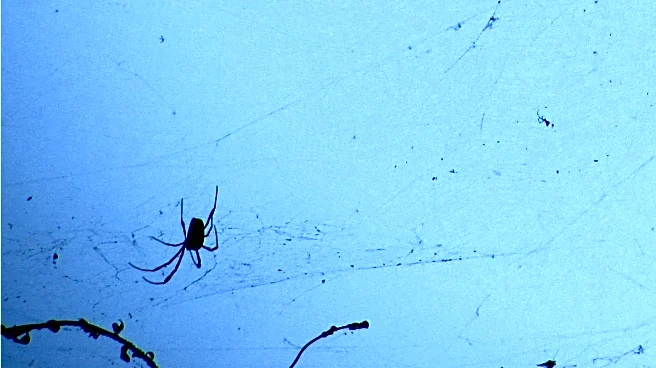What's Happening?
Arachnid expert Cara Shillington addresses common fears surrounding tarantulas, particularly the brown tarantula (Aphonopelma hentzi), which inhabits regions from Louisiana to Texas and Colorado. Shillington,
in a discussion with Jonathan Vigliotti, highlights the misconceptions about these creatures, emphasizing their non-aggressive nature. The conversation takes place in the context of the La Junta Tarantula Fest in Colorado, an event that attracts thousands of visitors eager to witness the tarantulas' mating season in the Comanche National Grassland. The festival serves as an educational platform to dispel myths and promote understanding of these misunderstood arachnids.
Why It's Important?
Understanding and overcoming irrational fears of tarantulas can have broader implications for wildlife conservation and education. By demystifying these creatures, events like the La Junta Tarantula Fest help foster a greater appreciation for biodiversity and the ecological roles that tarantulas play. This shift in perception can lead to increased support for conservation efforts and a reduction in the unnecessary killing of these harmless creatures. Additionally, educating the public about tarantulas can contribute to a more informed and less fearful society, promoting coexistence with various species.
What's Next?
The continued success of events like the La Junta Tarantula Fest suggests a growing interest in wildlife education and conservation. As more people become informed about tarantulas, there may be increased advocacy for their protection and habitat preservation. Future festivals and educational programs could expand to include more interactive and immersive experiences, further engaging the public and encouraging a deeper understanding of arachnids and other misunderstood species.
Beyond the Headlines
The fear of tarantulas is often rooted in cultural and psychological factors, which can be addressed through education and exposure. By challenging these fears, society can move towards a more rational and science-based understanding of wildlife. This shift could also influence media portrayals of tarantulas, leading to more accurate and less sensationalized representations.












